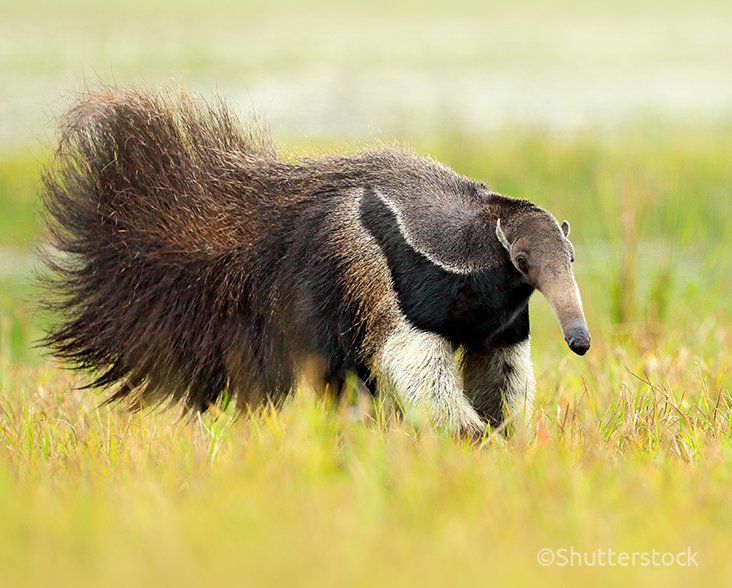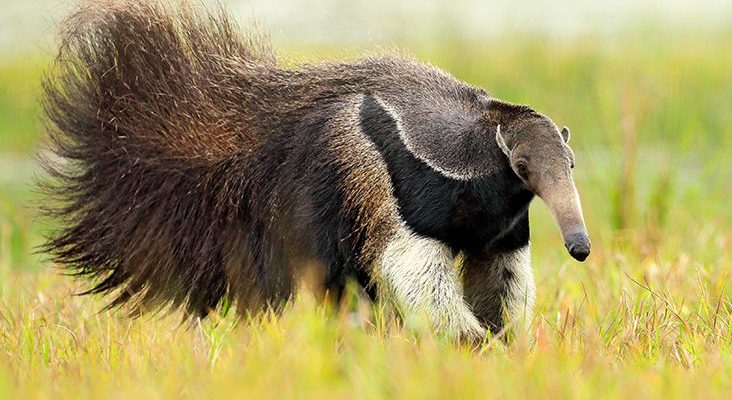
Imagine walking through a tropical forest, the air thick with humidity, and spotting a giant anteater foraging for ants and termites. They glide gracefully, almost like a living brushstroke against the vibrant greens of their habitat. However, their world is changing, and that’s where conservation comes into play. Let’s dive into what makes the giant anteater special, the challenges they face, and what’s being done to protect them.
What is the Giant Anteater?
The giant anteater, also known scientifically as *Myrmecophaga tridactyla*, is a large mammal native to Central and South America. These creatures can reach lengths of up to 7 feet, including their long tails! Their unique anatomy is particularly suited for their diet, which primarily consists of ants and termites. Those long claws? They’re perfect for digging into mounds.
A classic case of adaptation, right? Their specialized snouts help them sniff out food, while their thick fur protects them from insects. Unlike many animals, the giant anteater doesn’t have teeth; instead, it uses its long tongue to lap up its prey. Think about that for a second—an animal that literally “tastes” its food with a tongue that can extend over 2 feet!
So, what makes them a target for conservation? Let’s explore that further.
Current Conservation Status of Giant Anteaters
As of now, the giant anteater is classified as “Vulnerable” by the International Union for Conservation of Nature (IUCN). This means they are at risk of becoming endangered in the future if their conditions do not improve. You might be wondering what led them to this status.
Loss of habitat due to deforestation and agricultural expansion is the biggest threat facing giant anteaters. As humans clear land for farming, they encroach on their natural habitats, making it tougher for these animals to find food and shelter. The fragmentation of forests also isolates populations, making it harder for them to breed and thrive.
In addition to habitat loss, they face dangers from hunting and vehicular traffic. Imagine trying to cross a busy road when your home is being carved away—that’s a daily reality for these anteaters. Understanding their current status is a critical step in planning effective conservation strategies.
Threats to Giant Anteater Populations
The list of challenges for giant anteaters is unfortunately long. Here are a few major threats that stand out:
- Habitat Loss: As mentioned earlier, deforestation for agriculture completely wipes out the areas where giant anteaters live. Less space means fewer resources, which can lead to starvation.
- Human-Wildlife Conflict: When humans encroach on their territory, conflicts can arise. Farmers might see them as pests, leading to killings.
- Road Mortality: The increasing number of vehicles on the roads is another significant threat. Many anteaters are hit by cars while crossing, as their natural habitats are fragmented by roads.
- Climate Change: Changes in climate can alter the ecosystems that support anteater populations, further threatening their food sources.
Addressing these threats is crucial for the survival of the giant anteater. But what’s being done about it?
Conservation Efforts in Action
When it comes to protecting the giant anteater, various conservation efforts have been put into place. One of the most notable initiatives focuses on habitat preservation. Conservation groups are working to establish protected areas, ensuring that these unique creatures can roam freely within safe environments.
Another key aspect is community engagement. Local communities are being educated about the importance of protecting giant anteaters and their habitats. By fostering a sense of responsibility and care for these animals, people can learn to coexist with them rather than view them as threats.
Last but not least, researchers are closely studying giant anteater populations to understand their behavior and ecology better. This research helps inform effective conservation strategies tailored to their needs.
How You Can Help
You might be wondering how you can contribute to giant anteater conservation efforts. Here are some simple yet impactful ways to get involved:
- Support Conservation Organizations: Donations to organizations dedicated to wildlife conservation can make a real difference.
- Spread Awareness: Share information about giant anteaters and their plight on social media or in your community.
- Visit National Parks: Ecotourism can provide funding for conservation while helping locals understand the value of maintaining healthy ecosystems.
- Reduce Your Carbon Footprint: Learning about sustainable practices and implementing them in your daily life can help combat climate change, which indirectly affects wildlife.
Every little bit helps, and public interest is crucial for conservation success.
The Future of the Giant Anteater
Looking ahead, the future of the giant anteater is uncertain but hopeful. With ongoing conservation efforts and growing public awareness, there’s potential for their populations to stabilize. The key lies in continuing to support habitat protection and fostering community involvement.
It’s important to remember that giant anteaters are more than just a quirky animal. They play a vital role in the ecosystems they inhabit, helping control insect populations. Protecting them also means protecting a piece of the biodiversity that keeps our planet healthy.
In conclusion, the question “Is the giant anteater endangered?” reveals a complex story of threats and hopeful conservation efforts. By learning more about these incredible creatures and supporting initiatives aimed at their protection, we can all contribute to ensuring they thrive for generations to come.

